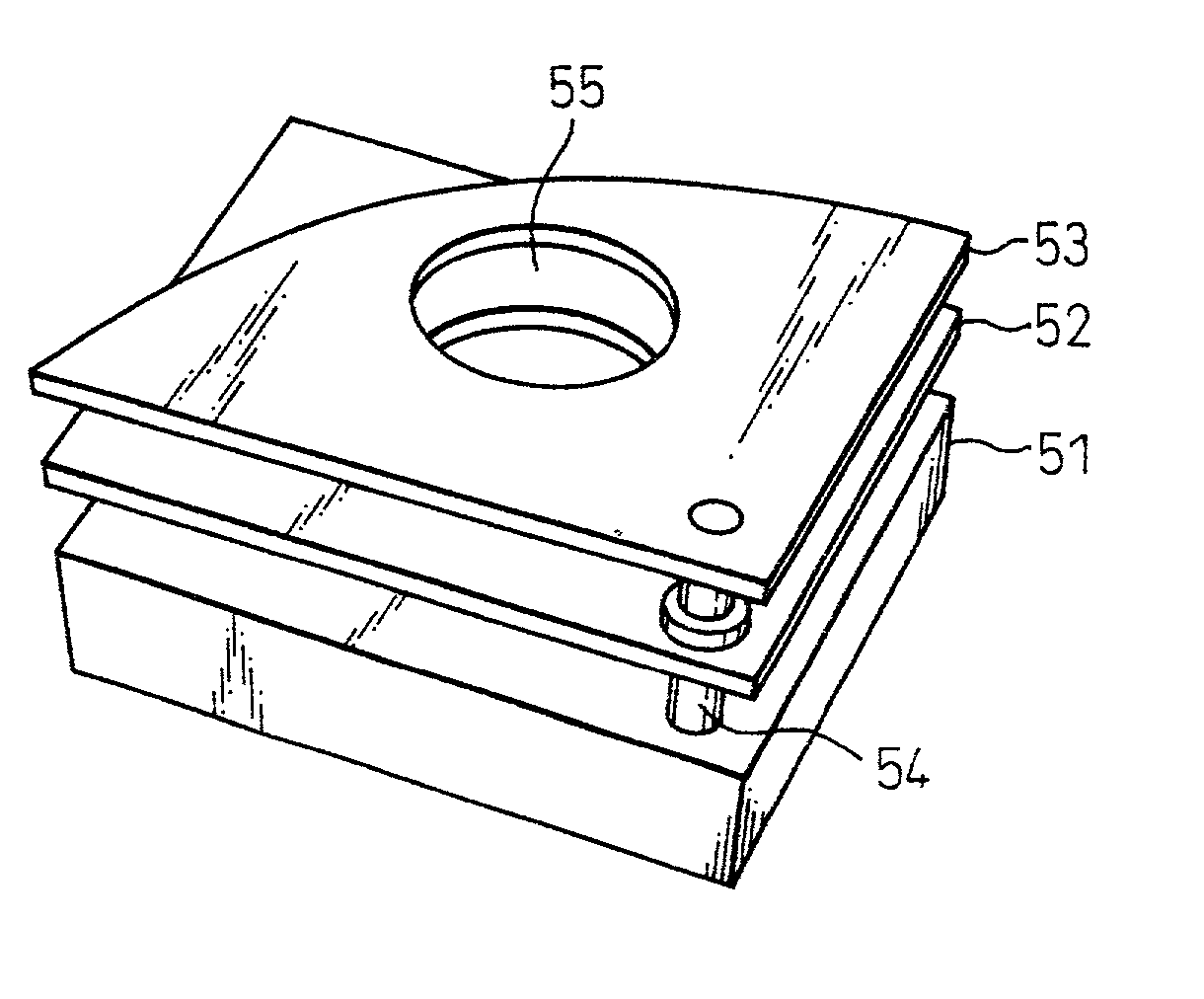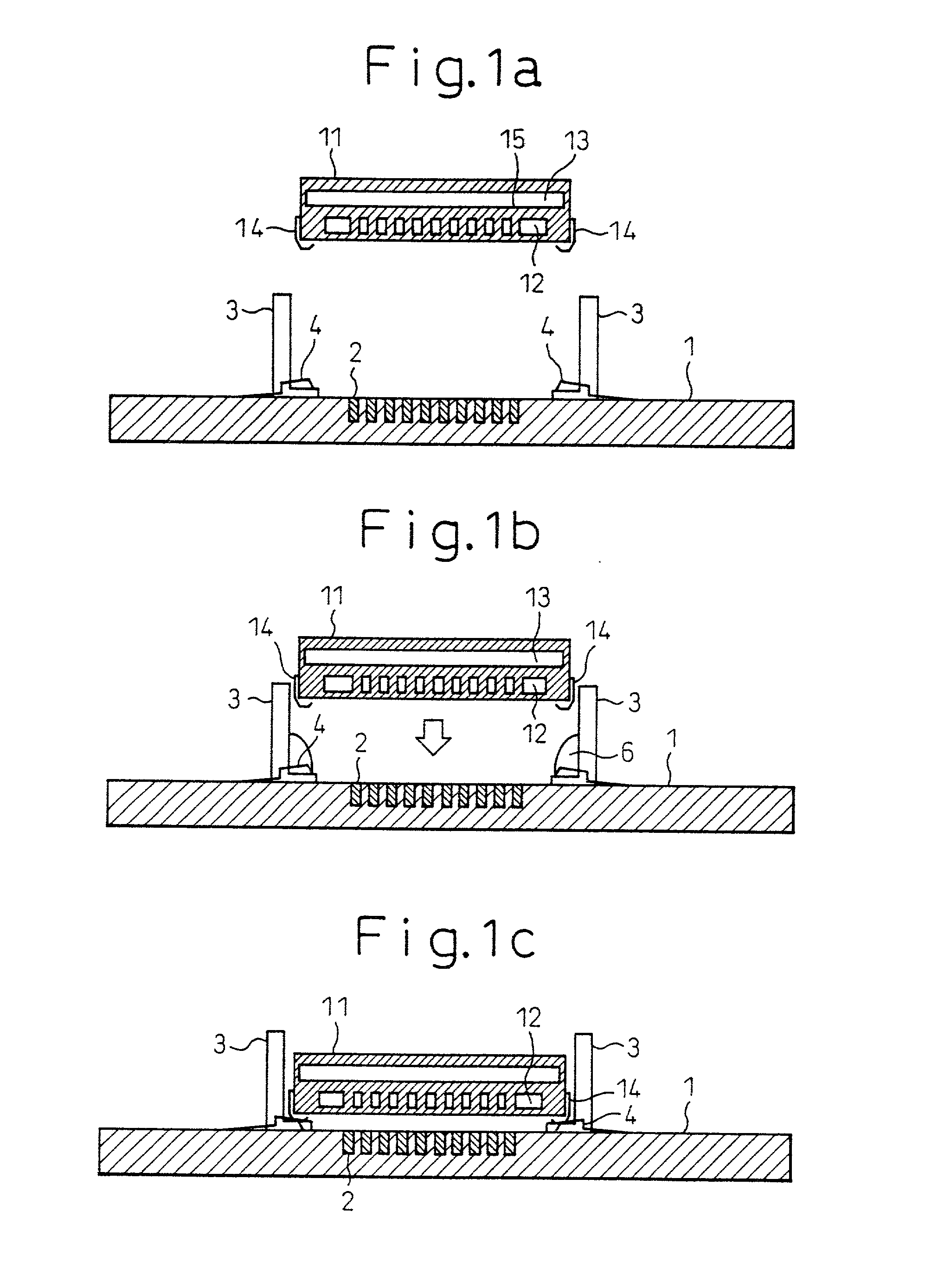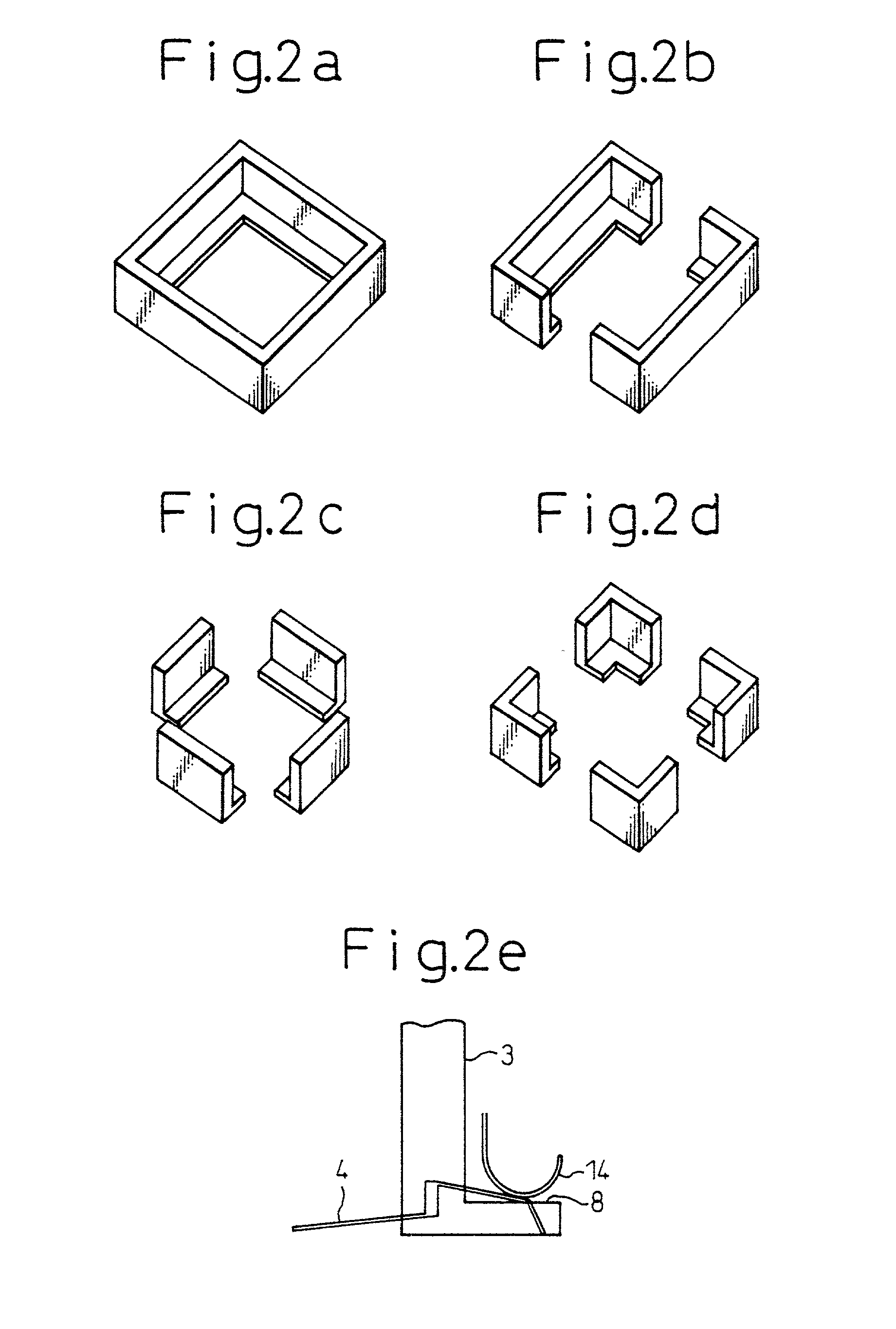Semiconductor parts and semiconductor mounting apparatus
a technology of semiconductor and semiconductor parts, applied in the direction of optical elements, coupling device connections, instruments, etc., can solve the problems of increased heat generation, crosstalk between wiring, increased wiring resistance, etc., and achieve the effect of accurate registry
- Summary
- Abstract
- Description
- Claims
- Application Information
AI Technical Summary
Benefits of technology
Problems solved by technology
Method used
Image
Examples
Embodiment Construction
[0058] Embodiments of the present invention will be explained below.
[0059] FIGS. 1a to 1c are diagrams showing the process of mounting an OEIC package on a printed board. Sectional views of the printed board and the OEIC package mounted on the printed board are shown in each drawing.
[0060] In FIGS. 1a to 1c, 1 designates a printed board, 2 waveguides, 3 a connector socket, 4 power terminals or ground terminals, 6 an adhesive, 11 an OEIC package, 12 an optical device array, 13 an electrical circuit chip and 14 a package-side power terminal or ground terminal.
[0061] FIG. 1a shows the first step of mounting.
[0062] The OEIC package 11 has sealed therein the optical device array 12 and the electrical circuit chip 13, which are electrically connected to each other through ball bumps 15. The optical device array 12 has arranged thereon LDs (laser diodes) as light-emitting elements and PDs (photo-diodes) as photo-detectors. The electrical signal output from the electrical circuit chip 13 is...
PUM
| Property | Measurement | Unit |
|---|---|---|
| diameter | aaaaa | aaaaa |
| diameter | aaaaa | aaaaa |
| diameter | aaaaa | aaaaa |
Abstract
Description
Claims
Application Information
 Login to View More
Login to View More - R&D
- Intellectual Property
- Life Sciences
- Materials
- Tech Scout
- Unparalleled Data Quality
- Higher Quality Content
- 60% Fewer Hallucinations
Browse by: Latest US Patents, China's latest patents, Technical Efficacy Thesaurus, Application Domain, Technology Topic, Popular Technical Reports.
© 2025 PatSnap. All rights reserved.Legal|Privacy policy|Modern Slavery Act Transparency Statement|Sitemap|About US| Contact US: help@patsnap.com



